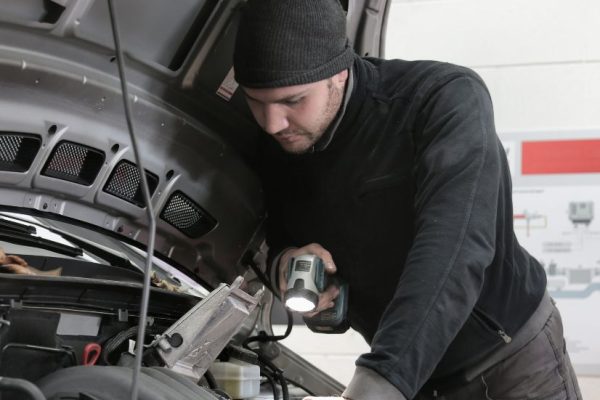In the fast-paced world of logistics, where every second counts and every mile matters, even the smallest oversight can lead to catastrophic consequences. Picture this: a shipment of delicate electronics bouncing around in transit, or valuable machinery shifting dangerously on a truck bed. It’s not just about getting goods from point A to point B; it’s about ensuring they arrive safely and intact. Enter logistic straps—the unsung heroes of transportation that keep your cargo secure and prevent costly disasters. In this blog post, we’ll explore how these simple yet vital tools play a crucial role in safeguarding your shipments against accidents and damage during transit. Buckle up as we dive into best practices for using logistic straps effectively and learn why they should be an indispensable part of your shipping strategy!
Introduction to the importance of logistic straps in transportation
When it comes to transporting goods, safety and security are paramount. Whether you’re hauling furniture across town or shipping delicate electronics across the country, the last thing you want is for your cargo to shift, topple over, or sustain damage during transit. Enter logistic straps—your reliable partner in ensuring a smooth journey for your valuable items. These unassuming yet powerful tools play a crucial role in preventing accidents and protecting against costly damages. Understanding how they work can make all the difference between a successful delivery and a disastrous one. Let’s dive deeper into what logistic straps are all about and why they’re essential for anyone involved in transportation.
What are logistic straps and how do they work?
Logistic straps are essential tools in the world of cargo transportation. These durable bands come equipped with different fastening mechanisms designed to secure loads efficiently.
They work by looping around items and attaching them to a stable framework, such as a truck bed or trailer. The mechanism, whether it’s a ratchet or cam buckle, ensures that tension is applied consistently, keeping everything in place during transit.
When tightened correctly, logistic straps create friction against the cargo. This prevents shifting and minimizes the risk of damage or accidents on the road. They’re versatile enough for various applications—from moving furniture to securing heavy machinery.
Understanding how these straps function allows users to maximize their effectiveness while ensuring safety standards are met during transport. With proper application, they offer peace of mind for both drivers and those relying on delivered goods.
Types of logistic straps: ratchet straps, cam buckle straps, and E-track straps
Logistic straps come in various forms, each tailored for specific needs. Ratchet straps are among the most popular. They feature a ratcheting mechanism that allows users to tighten cargo securely. This added tension minimizes movement during transit and is ideal for heavier loads.
Cam buckle straps are another versatile option. They use a simple cam mechanism that makes them easy to adjust and release. These straps work well with lighter cargo and provide quick securing solutions.
E-track straps offer flexibility like no other. Designed to work with E-track systems, they can be easily attached at multiple points within a trailer or truck bed. This adaptability ensures your load remains stable throughout the journey.
Choosing the right type of logistic strap depends on your unique transportation requirements, but understanding these options can significantly enhance safety and efficiency.
The benefits of using logistic straps in transit
Logistic straps are essential for safe cargo transport. They play a crucial role in securing items, preventing unwanted movement during transit.
One major benefit is protection against damage. When loads shift, they can become damaged or even cause accidents. Properly secured cargo minimizes these risks significantly.
Another advantage is time efficiency. By using logistic straps effectively, drivers spend less time checking and adjusting loads on the road. This allows for smoother journeys and quicker deliveries.
Cost-effectiveness also stands out. Investing in high-quality logistic straps reduces the likelihood of lost or damaged goods, saving businesses money in the long run.
Flexibility is key too; these straps adapt to various shapes and sizes of cargo, making them suitable for diverse transportation needs. Their versatility ensures that both small packages and bulkier items remain secure throughout their journey.
Common accidents and damages prevented by logistic straps
Logistic straps play a crucial role in preventing accidents during transit. One of the most common issues is cargo shifting, which can lead to severe mishaps on the road. When items aren’t adequately secured, they can slide or topple over, increasing the risk for drivers and other vehicles.
Another frequent problem is damage to goods themselves. Fragile items such as glass or electronics need extra support. Logistic straps provide that necessary stability, ensuring products arrive intact at their destination.
In addition to protecting goods, these straps also minimize the chance of injury. Loose cargo can become dangerous projectiles during sudden stops or turns. By using logistic straps effectively, transporters not only secure their load but also prioritize safety for everyone on the road.
Without proper strapping methods in place, businesses face costly losses due to damaged inventory and potential legal liabilities from accidents caused by unsecured loads.
Proper usage and safety tips when using logistic straps
When using logistic straps, proper handling is key. Always inspect your straps for any signs of wear or damage before use. Frayed edges or weakened buckles can lead to failure during transit.
Ensure that the load is evenly distributed and secure it firmly. This prevents shifting during transportation, minimizing risks of accidents.
Adjust the tension correctly; too loose can mean instability while too tight might cause damage to the cargo.
Use protective sleeves on sharp edges to avoid cutting through the strap material. This simple step can extend their lifespan.
Always follow manufacturer guidelines provided with Vulcan Brands logistic straps for specific usage recommendations. They often include valuable information tailored to different types of cargo and conditions.
Finally, never exceed weight limits specified by the brand. Doing so not only jeopardizes safety but also may void warranties on your equipment.
Alternative ways to secure cargo during transit
When it comes to securing cargo, logistic straps are a popular choice. However, there are several alternatives worth considering.
Cargo nets provide a flexible solution for covering and securing loose items in your load. Their mesh design allows for breathability while preventing movement during transportation.
Another option is using tie-downs or ropes. These can be effective for lighter loads but require knots that may not hold as securely over time compared to strap systems.
For bulkier items, palletizing might be ideal. Stacking goods on pallets and wrapping them with stretch film keeps everything stable and ready for transit.
Lastly, consider using blocking and bracing techniques within the transport vehicle. Creating physical barriers prevents shifting while allowing efficient use of space.
Exploring these alternatives can enhance safety and efficiency during your shipping processes.
Conclusion: why investing in high-quality logistic straps is crucial for safe and efficient transportation.
Investing in high-quality logistic straps is essential for anyone involved in transportation and logistics. These sturdy and reliable tools play a critical role in ensuring that cargo remains secure during transit, minimizing the risk of accidents and damage. By choosing durable options like those provided by Vulcan Brands, you can trust that your loads are stabilized effectively.
Logistic straps not only protect your products but also enhance safety for drivers and other road users. Any investment made into quality equipment will pay off through reduced losses, fewer claims on insurance, and improved operational efficiency. The right logistic strap helps maintain order during transport while giving you peace of mind knowing that everything is secured properly.
When it comes to transporting goods—whether you’re a small business owner or managing a large fleet—the importance of using dependable logistic straps cannot be overstated. They are more than just accessories; they are vital components of safe transportation practices that contribute to overall success in logistics management.









